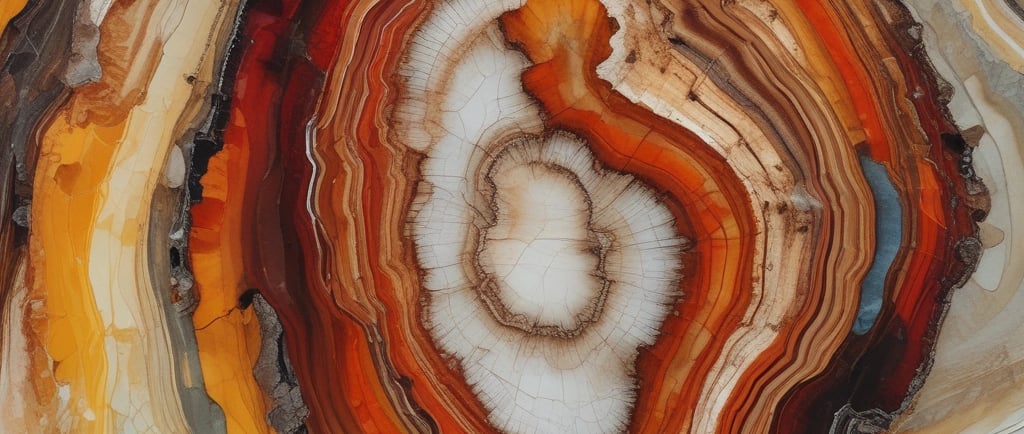What makes petrified wood different colours.
different geograophic locations lead to differnt chemical compositions of petrified wood
6/27/20252 min read


The Rainbow of Petrified Wood: A Global Color Palette
Petrified wood tells a story not just of ancient forests, but of the unique geological conditions that transformed organic matter into stunning mineral displays. The colors that emerge in these fossilized treasures vary dramatically by location, creating a natural palette that reflects the mineral-rich environments where they formed.
American Blues and Reds: The Painted Desert's Palette
The southwestern United States, particularly Arizona's Petrified Forest National Park, produces some of the world's most vibrant petrified wood. Here, ancient logs display brilliant blues and deep reds that seem almost too vivid to be natural. These striking colors result from iron oxide minerals that infiltrated the wood during fossilization. Iron creates the warm red and orange hues, while manganese and other trace elements contribute to the cooler blue and purple tones. The high desert environment provided the perfect conditions for these mineral-rich groundwaters to slowly replace the original wood structure, cell by cell.
Indonesian Earth Tones: Nature's Mahogany
Indonesia's petrified wood tells a different geological story through its rich browns and deep blacks, complemented by striking whites. The tropical climate and volcanic activity that characterizes much of Indonesia created mineral environments dominated by silica and carbon compounds. These conditions produced petrified wood with chocolate browns, warm tans, and jet blacks that mirror the colors of the living rainforests above, while pure silica deposits created brilliant white sections that provide dramatic contrast. The darker tones often indicate higher concentrations of organic compounds that were preserved during the fossilization process, creating specimens that retain an almost wood-like appearance despite being completely mineralized. Some Indonesian specimens also feature beautiful blue chalcedony formations, where silica-rich solutions created translucent blue bands that contrast dramatically with both the darker wood tones and the pristine white areas.
European Variations
Germany's petrified wood often displays subtle grays and muted earth tones, reflecting the country's sedimentary geology and cooler formation environments. The UK produces specimens with similar understated colors, typically showing pale yellows and soft browns from its limestone-rich environments. These European specimens demonstrate how temperate climates and different geological processes create more subdued but equally beautiful fossilized wood.
Madagascar's Tropical Treasures
Madagascar contributes spectacular specimens with vivid reds, oranges, and yellows, created by the island's unique combination of volcanic activity and mineral-rich soils. These specimens often display swirling patterns and brilliant colors that rival any artistic creation, reflecting the island's complex geological history and diverse mineral deposits.
Cyprus Copper: A Mediterranean Surprise
Cyprus adds another chapter to petrified wood's color story with specimens that showcase green and turquoise hues from copper mineralization. The island's long history of copper mining reflects the copper-rich geology that also influenced its petrified wood formation. When copper-bearing solutions interacted with fossilizing wood, they created unique specimens with metallic green sheens and blue-green patterns that distinguish Cypriot petrified wood from specimens found elsewhere.
The Science Behind the Spectrum
These color variations remind us that petrified wood is essentially a snapshot of ancient groundwater chemistry. Each specimen reflects the specific cocktail of minerals present during its formation millions of years ago. From the iron-rich soils of Arizona to the volcanic ash of Indonesia to the copper deposits of Cyprus, our planet's geological diversity creates an endless variety of colors in these ancient wooden time capsals.
The next time you encounter petrified wood, remember that you're not just looking at a fossilized tree—you're seeing the artistic signature of the earth itself, painted in minerals across geological time.
